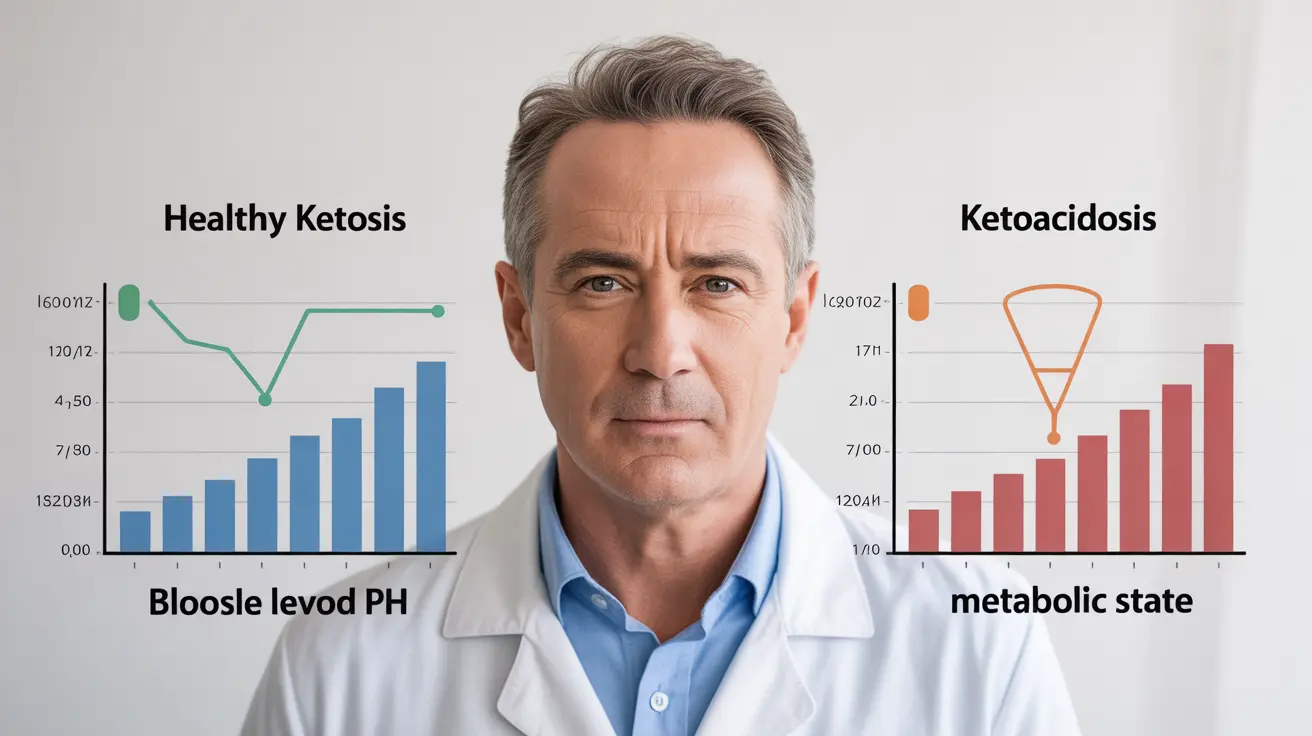The terms ketosis and ketoacidosis might sound similar, but they represent vastly different metabolic states with significantly different implications for your health. While ketosis is generally a safe and sometimes desired metabolic state, ketoacidosis is a dangerous medical emergency requiring immediate attention.
Understanding the distinction between these conditions is crucial, especially for people following ketogenic diets or managing diabetes. Let's explore the key differences, warning signs, and important safety considerations for both conditions.
What is Ketosis?
Ketosis is a natural metabolic state where your body primarily uses fat for energy instead of carbohydrates. This occurs when carbohydrate intake is very low, typically below 50 grams per day. During ketosis, your liver converts fat into ketones, which serve as an alternative fuel source for your brain and body.
Common signs of ketosis include:
- Initial fatigue that improves over time
- Decreased appetite
- Possible mild breath changes
- Increased mental clarity after adaptation
- Moderate weight loss
Understanding Ketoacidosis
Ketoacidosis, specifically diabetic ketoacidosis (DKA), is a severe medical emergency that primarily affects people with type 1 diabetes. It occurs when the body produces dangerously high levels of ketones, leading to blood acidification. This condition typically develops when there's insufficient insulin to help cells use glucose for energy.
Warning signs of ketoacidosis include:
- Extreme thirst and frequent urination
- Severe stomach pain
- Nausea and vomiting
- Confusion or difficulty concentrating
- Rapid breathing
- Fruity-scented breath
- Very high blood sugar levels
Key Differences Between Ketosis and Ketoacidosis
The primary distinction lies in ketone levels and blood pH. In nutritional ketosis, ketone levels remain controlled (0.5-3.0 mmol/L), while in ketoacidosis, they can exceed 20 mmol/L. Ketosis maintains normal blood pH, whereas ketoacidosis causes dangerous blood acidification.
Blood Sugar Levels
During ketosis, blood sugar levels remain stable or slightly lower than normal. In contrast, ketoacidosis typically involves extremely high blood glucose levels, often exceeding 250 mg/dL.
Safety and Control
Ketosis is a controlled metabolic state that can be safely achieved through dietary changes. Ketoacidosis is an uncontrolled, dangerous condition requiring emergency medical intervention.
Preventing Ketoacidosis in High-Risk Individuals
People with diabetes can prevent ketoacidosis by:
- Monitoring blood sugar regularly
- Taking prescribed insulin as directed
- Checking ketone levels when blood sugar is high
- Staying well-hydrated
- Following their healthcare provider's management plan
Frequently Asked Questions
What are the main differences between ketosis and ketoacidosis?
Ketosis is a controlled metabolic state with moderate ketone levels (0.5-3.0 mmol/L) and normal blood pH, while ketoacidosis involves dangerously high ketone levels (>20 mmol/L), blood acidification, and requires immediate medical attention.
How can I tell if I am in ketosis or developing dangerous ketoacidosis?
Ketosis typically involves mild symptoms like decreased appetite and initial fatigue. Ketoacidosis presents with severe symptoms including extreme thirst, confusion, rapid breathing, and stomach pain. If you're unsure or concerned, seek immediate medical attention.
What are the symptoms of ketoacidosis that require immediate medical attention?
Seek emergency care for symptoms including severe stomach pain, persistent vomiting, confusion, rapid breathing, fruity breath odor, and extremely high blood sugar levels.
Is the ketogenic diet safe and how does it relate to ketosis and ketoacidosis?
The ketogenic diet is generally safe for most healthy individuals and induces controlled ketosis. However, people with type 1 diabetes, pregnant women, and those with certain medical conditions should consult healthcare providers before starting this diet.
How do people with diabetes prevent and manage ketoacidosis?
Diabetes management includes regular blood sugar monitoring, proper insulin administration, ketone testing when blood sugar is high, staying hydrated, and following medical guidance. Any concerning symptoms should prompt immediate medical attention.




